Since you are using SQL Server you will want to use the PIVOT operator. You can do this two ways, either via a Static PIVOT or a Dynamic PIVOT.
A Static PIVOT, means that you will code for each column that you need to rotate. Since it appears you have a lot of columns I doubt you will want to do it this way. But the code would be similar to this:
create table t1
(
statno int,
statdate datetime,
statcolumnname varchar(50),
statcolumnvalue int
)
insert into t1 values (1, '4/1/2012 12:15:00', 'MPB-1MA.MP00-1MA', 17)
insert into t1 values (1, '4/1/2012 12:15:00', 'MPB-1MA.MP01-1MA', 18)
insert into t1 values (1, '4/1/2012 12:15:00', 'MPB-1MA.MP02-1MA', 18)
insert into t1 values (1, '4/1/2012 12:15:00', 'MPB-1MA.MP03-1MA', 18)
insert into t1 values (1, '4/1/2012 12:15:00', 'MPB-1ME.MP10-1ME', 26)
insert into t1 values (1, '4/1/2012 12:15:00', 'MPB-1ME.MP11-1ME', 2)
insert into t1 values (1, '4/1/2012 12:15:00', 'MPB-1ME.MP12-1ME', 2)
insert into t1 values (1, '4/1/2012 12:15:00', 'MPB-2MC.MP08-2MC', 2)
insert into t1 values (1, '4/1/2012 12:15:00', 'MPB-2MC.MP09-2MC', 22)
insert into t1 values (1, '4/1/2012 12:15:00', 'MPB-2MC.MP0A-2MC', 22)
insert into t1 values (1, '4/1/2012 12:15:00', 'MPB-2MC.MP0B-2MC', 22)
select *
from
(
select statdate, statcolumnname, statcolumnvalue
from t1
) x
pivot
(
min(statcolumnvalue)
for statcolumnname in ([MPB-1MA.MP00-1MA], [MPB-1MA.MP01-1MA], [MPB-1MA.MP02-1MA])
) p
Here is a SQL Fiddle with a working example.
That will be very cumbersome if you have a lot of columns. So you could also use a Dynamic Pivot which will generate the list of columns to rotate when you run the query. Here is the code:
DECLARE @cols AS NVARCHAR(MAX),
@query AS NVARCHAR(MAX);
select @cols = STUFF((SELECT distinct ',' + QUOTENAME(c.statcolumnname)
FROM t1 c
FOR XML PATH(''), TYPE
).value('.', 'NVARCHAR(MAX)')
,1,1,'')
set @query = 'SELECT statdate, ' + @cols + ' from
(
select statdate, statcolumnname, statcolumnvalue
from t1
) x
pivot
(
min(statcolumnvalue)
for statcolumnname in (' + @cols + ')
) p '
execute(@query)
Both of them will give you the same results.

